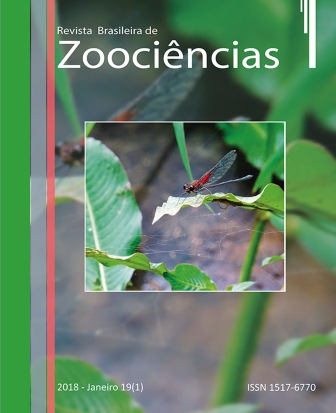Revisiting spatial and temporal patterns of dung beetles in Brazilian Pampa: the role of β-diversity process-related components
DOI:
https://doi.org/10.34019/2596-3325.2018.v19.24683Resumo
β-diversity is a key measure to understand biodiversity patterns across spatial and temporal scales. In this study, two published datasets on dung beetle (Coleoptera: Scarabaeinae) from Brazilian Pampa are re-analyzed aiming to investigate the role of β-diversity process-related components based on composition- and abundance-based approaches for both spatial (grassland-forest ecotone) and temporal (samplings along a year) scales. Dung beetles were sampled in a grassland-forest ecotone in October 2006 and in a grassland area monthly during an entire year (December 2006 to November 2007), using baited pitfall traps. β-diversity was decomposed into turnover and nestedness-resultant components based on Jaccard dissimilarity coefficient, and also into balanced variation in abundance and abundance gradients based on Bray-Curtis dissimilarity coefficient. Both environmental (spatial scale) and climatic (temporal scale) differences affected dung beetles similarly in terms of species replacement and nestedness patterns, and similarly in terms of variation in abundance and abundance gradients. For both spatial and temporal approach, the species turnover and the variation in species abundances were higher, while nestedness patterns and abundance gradients were of minor relative importance.Downloads
Não há dados estatísticos.
Downloads
Publicado
2018-01-06
Edição
Seção
Artigos



